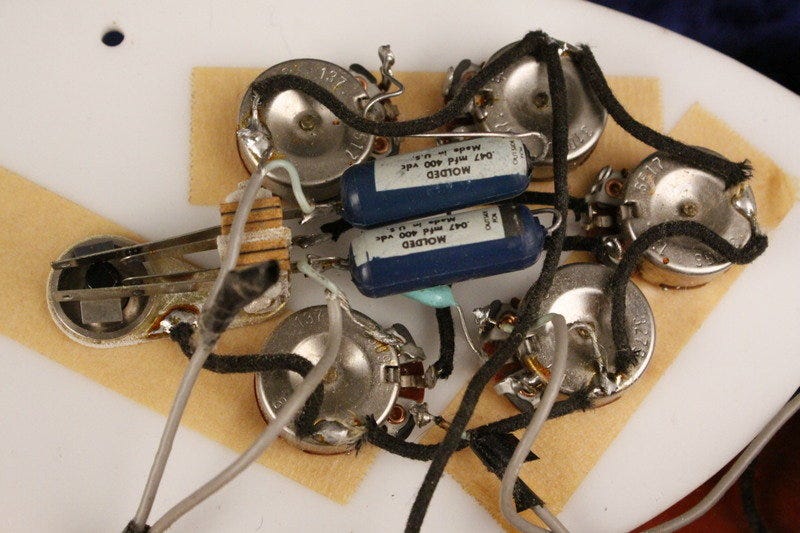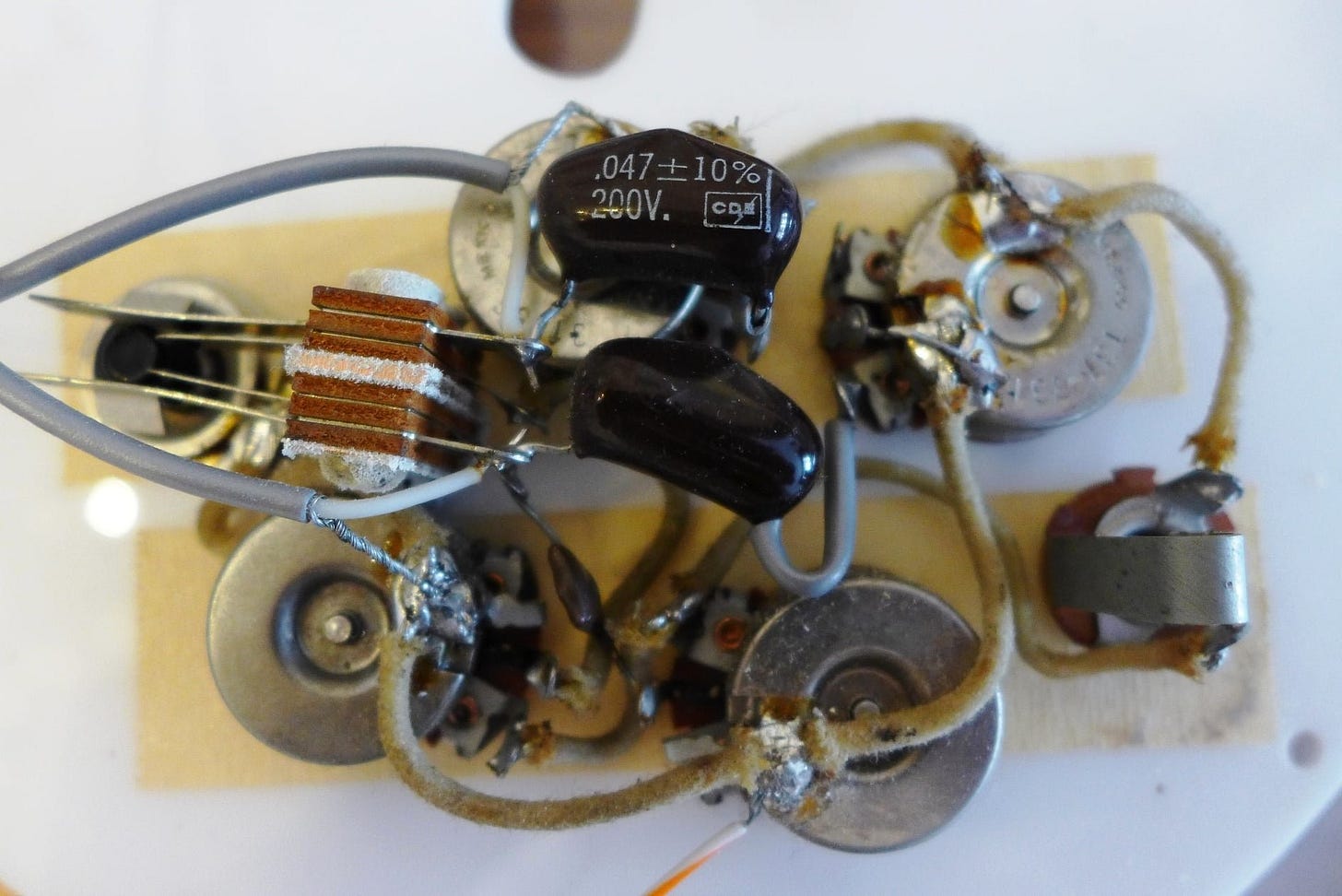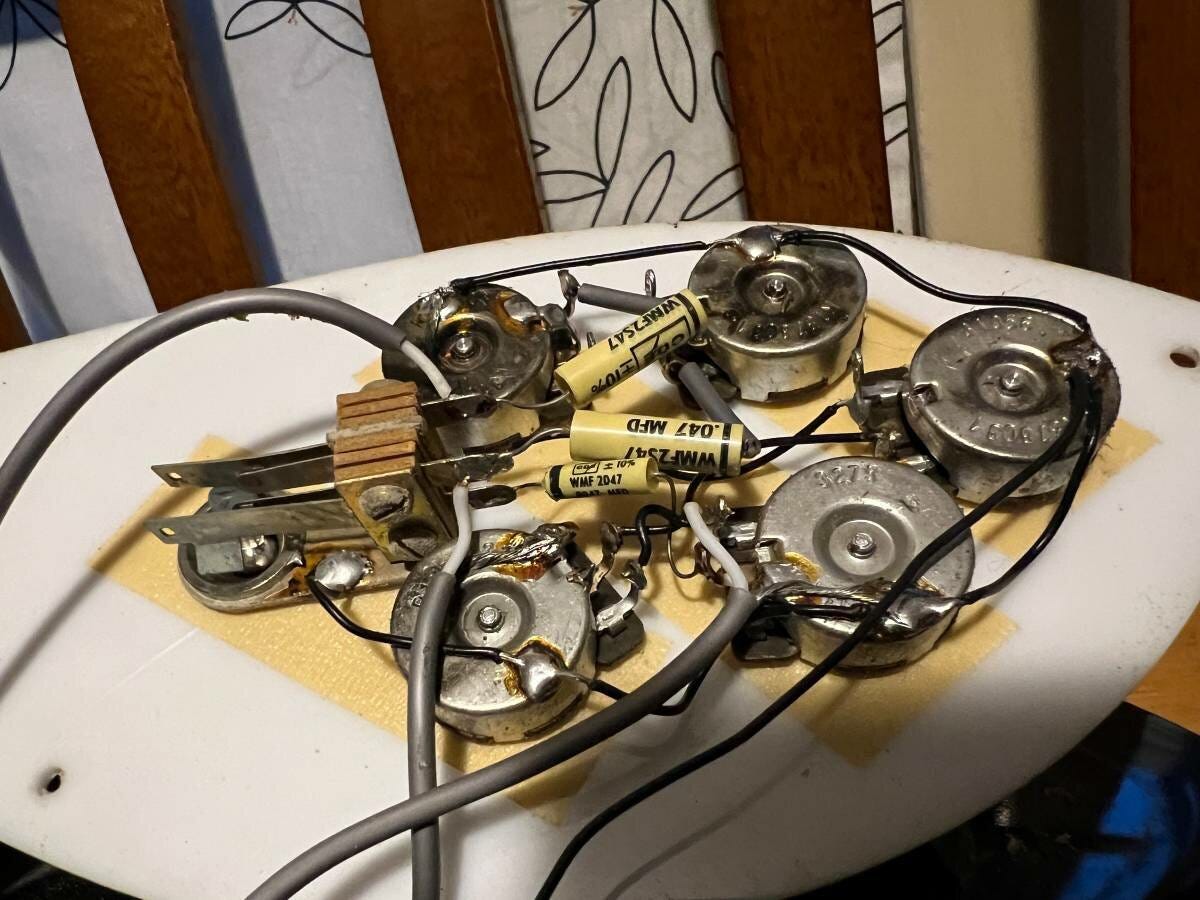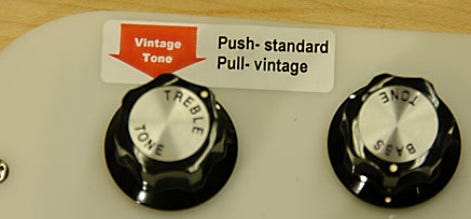
That’s it. That’s the Rickenbacker “vintage tone circuit”. A .0047µF capacitor. Street price of about $2. But from the very first four knob Capris to 1984 almost every traditional Rickenbacker guitar and bass had one of these guys wired directly from the 3 way switch to the bridge pickup volume knob. You see the small baby blue capacitor peeking out from under the large dark blue tone capacitors in the 1965 365 harness below? That’s the vintage tone circuit in situ.

Here’s a tiny black one on a 1973 4001:

And here it is on a 1981 330, in yellow this time:

So what does it “do”? You’ll hear it referred to as a “bass cut” capacitor, but the more correct term is “high pass filter”—it lets the signals above a pre-set level “pass through” and reduces the amplitude of the signal below that level. Either way, the end result is the same. It’s why the bridge pickups from this era are so bright and chime-y. It’s part of what creates the jangle.
But because it filters out a lot of the input going to the pickup, that also means that the output of the pickup is reduced when compared to the “unfiltered” neck pickup. If you’ve ever wondered why your neck pickup is louder than your bridge pickup…that’s why.
Some people think it’s…a bit too much. On a 4001 with flatwounds—like they originally came—taking a little of the bottom out is a good thing. Put some roundwounds on it, though…and you’re probably going to want to roll the tone off and blend in some neck pickup. Ditto on a 360. And because the bridge pickup has a little less “oomph” than the neck pickup, it can be difficult to get “the sound” dialed in just right.
So over the years, a lot of people just cut the capacitor out and replaced it with a shunt to send an unfiltered signal from the bridge pickup. Which was then louder, and not quite as bright….and probably closer to what was originally intended! Eventually, in 1984, Rickenbacker themselves cut it out and stopped selling new guitars with the high pass filter. And that was that for the “vintage tone circuit”.
Well, until they decided they were going to build the most accurate Beatles guitar replicas possible: the C-Series guitars. You can learn more about them all here, but what’s important to know now is that when the 4001C64 and 4001C64S appeared in 2002, the vintage tone circuit was back, just as it was on the original 1964 4001S. Same on the 360/12C63 in 2005, and the 325C64 in 2006. And, speaking of 2006:

New Standard Feature! - 1/10/2006
RIC Announces the ''Vintage Tone Selector'' Feature for all 4003 Basses
Rickenbacker Int'l Corp. is pleased to introduce the Vintage Tone Selector for 4003 Series basses. This additional control is included standard at no additional cost on all 4003 basses beginning in the 2006 model year…
We have decided to give our players a choice, allowing the best of both worlds. With a simple pull of the treble tone control, the Vintage Tone Selector will allow a player to move between both sounds at the drop of a hat. Pressed in, you'll hear the familiar balanced tone of the 4003, while pulled out to engage the circuit, you'll appreciate the bite and crispness popularized by such artists as Chris Squire.
True, it’s only available on the 4003 (and 480XC!). But here’s the great news about the vintage tone circuit: anybody with a soldering gun and $2 can take it out or put it in. And then put it back in or take it back out. Or you can drop a few more bucks on a push/pull pot and replicate the 4003’s setup.
And that’s all there is to know about the vintage tone circuit. I bet you thought it was going to be a lot more complicated than that! If you haven’t played around with it, you should. It’s cheap, and an easy way to get a brand new guitar!




Excellent information to help understand the differences in circuits. Thanks so much for clarifying including pictures. 👏👏👏
Treasure trove of info here Andy..! We appreciate it👍